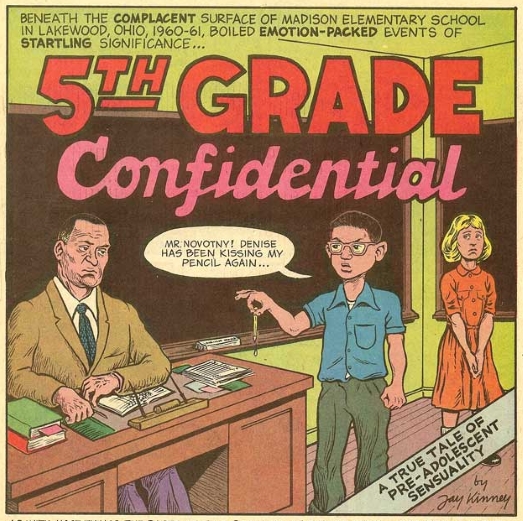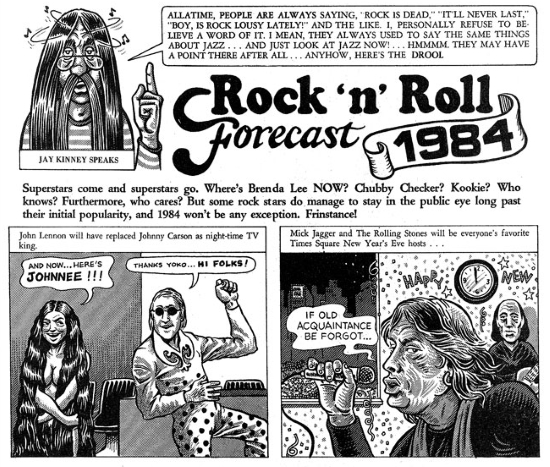[ad_1]
Skip to comments
Jim Keefe remembers Jay Kennedy; Jay Kinney recalls his underground comix days; Rick Marschall presents W. C. Fields, cartoonist; Allan Holtz present W. C. Fields the comic strip; Brian Walker of The Cartooning Walker Family profiled; and the Art Spiegelman documentary.
Jay Kennedy
I first met Jay back in 1989 when I was fresh out of the Joe Kubert School. Jay was the new Head of the Comic Art department up at King Features … Jay was in his early 30’s when he started at King and signaled a changing of the guard in the Comics Art department. He seemed to have a very clear vision in what he wanted to accomplish at King. A fan of the medium, and underground comics in particular, he wanted to bring that sensibility to the comics page.

Fun fact: It was Jay who hired me as the writer and artist of Flash Gordon.
Jim Keefe remembers King Features Comics Editor Jay Kennedy.
Jay Kinney


I first became involved with what were then called “underground comix” in 1968, when I drew my first published strip for Bijou Funnies, edited by Jay Lynch and Skip Williamson. I was 18 at the time, and my early work was, well, early. By the time I did the stories displayed here and on the next page, I had advanced considerably.
Jay Kinney himself recalls his underground comix cartooning career.
W. C. Fields, Cartoonist
I have always considered W C Fields to have been one of America’s premier humorists of the 20th century. That is, not “merely” a comedian (or juggler, or actor, or radio comedian) but in the ranks of Robert Benchley, James Thurber, and Ring Lardner.
Among Fields’s other “hats” was his surprising activity as a cartoonist.
It cannot truly be said that he was a genius as a caricaturist or cartoonist, yet his talent was above average. He drew frequently in his early days as a comic juggler and vaudeville comedian, often in self-promotional stationery and business cards; or for newspapers in cities along the theatrical circuit.

Rick Marschall presents some of W. C. Fields‘ cartooning efforts.
W. C. Fields, Comic Strip Character
… by the 1980s the W.C. Fields persona was no longer sharply defined in the public consciousness. While the classic images of Fields were still cultural touchstones, relatively few people had seen any of his movies.
While it is a shame that the general public had begun to lose touch with the W.C. Fields character, it is beyond ridiculous that the LA Times was willing to do a strip about the man, yet right from the beginning diluted the character into an almost unrecognizeably plain vanilla version of himself. If the syndicate was afraid to do a strip about a man who drinks to excess, hates children and kicks dogs, why in the world do a strip about W.C. Fields?

Allan Holtz informs us about the short run (less than a year) W. C. Fields comic strip.
Brian Walker
Brian’s involvement in the family business began in earnest after his college graduation. In 1974, he helped his father establish the Museum of Cartoon Art in Greenwich, initially located in the Mead mansion on Field Point Road. The museum later moved to the Ward Castle in 1977, hosting a grand “castle warming” event that raised $35,000 and was featured in People Magazine. In 1984, Brian got his first experience in gag writing, contributing ideas to a King Features strip starring Betty Boop and Felix the Cat. This opportunity soon led to him writing for Beetle Bailey and Hi and Lois. By 1993, King Features promoted Brian, his brother Greg, and Chance Brown (son of Dick Brown) as the next generation of cartoonists, officially taking over the Hi and Lois comic strip.


Charlie Sahpiro for The Greenwich Sentinel profiles Brian Walker.
Art Spiegelman
Explore the work of cartoonist Art Spiegelman and the impact of his Pulitzer Prize-winning graphic novel Maus, about his parents’ survival of the Holocaust. A defender of free speech, Spiegelman has spoken out as book bans spread across the country.

And a reminder that Art Spiegelman: Disaster Is My Muse is still available at PBS stations around the nation.
The film premiered earlier this week on PBS and is streaming online and available via the PBS app through May 14.
[ad_2]
Source link




